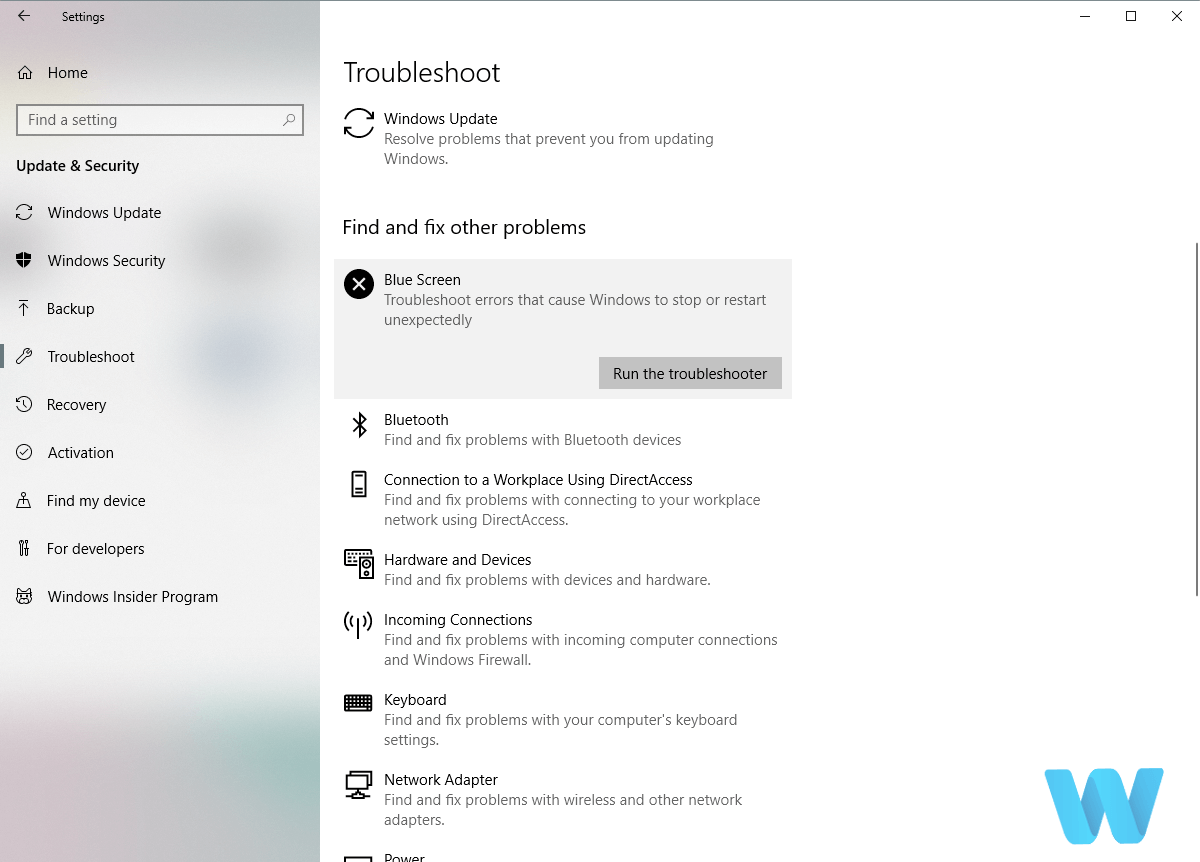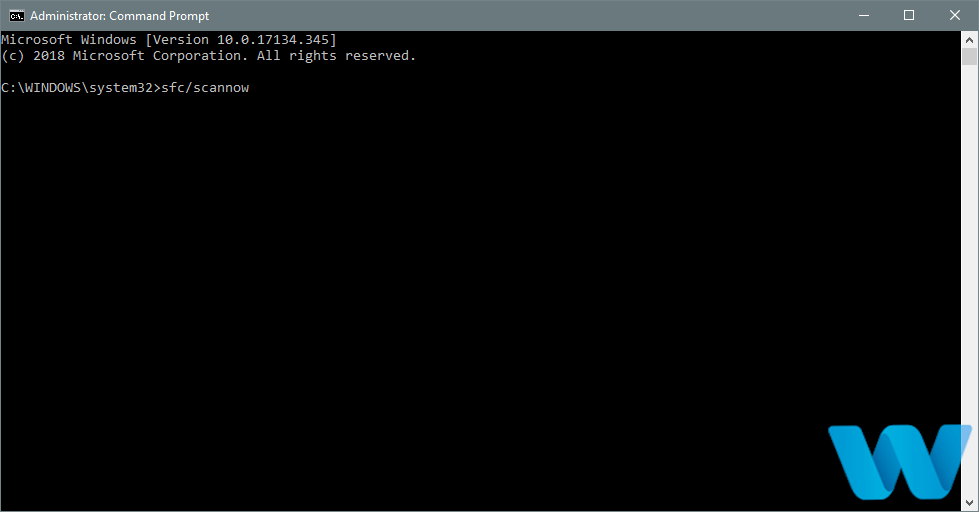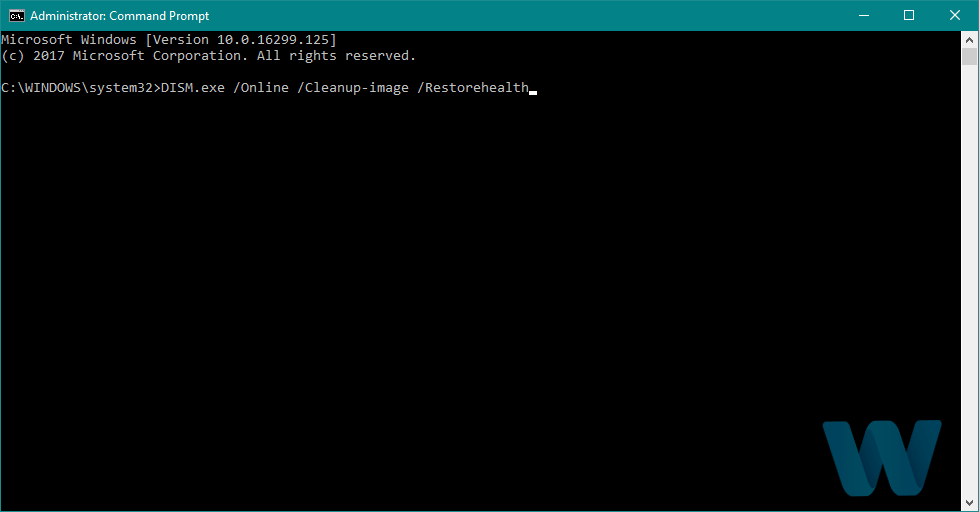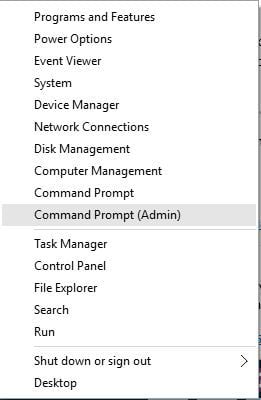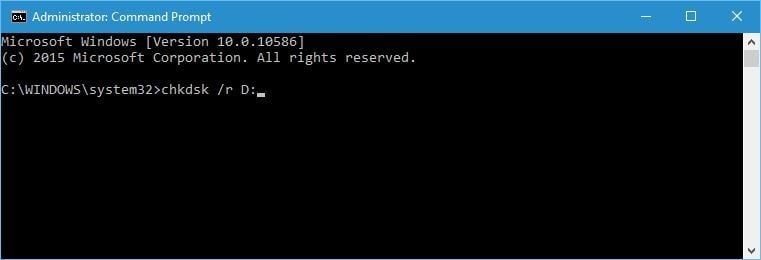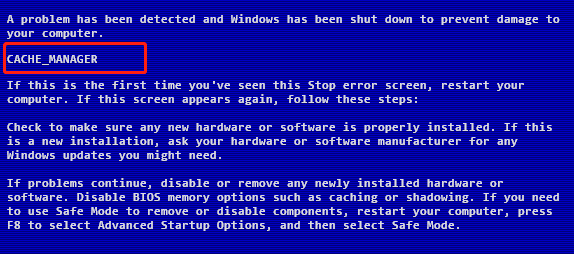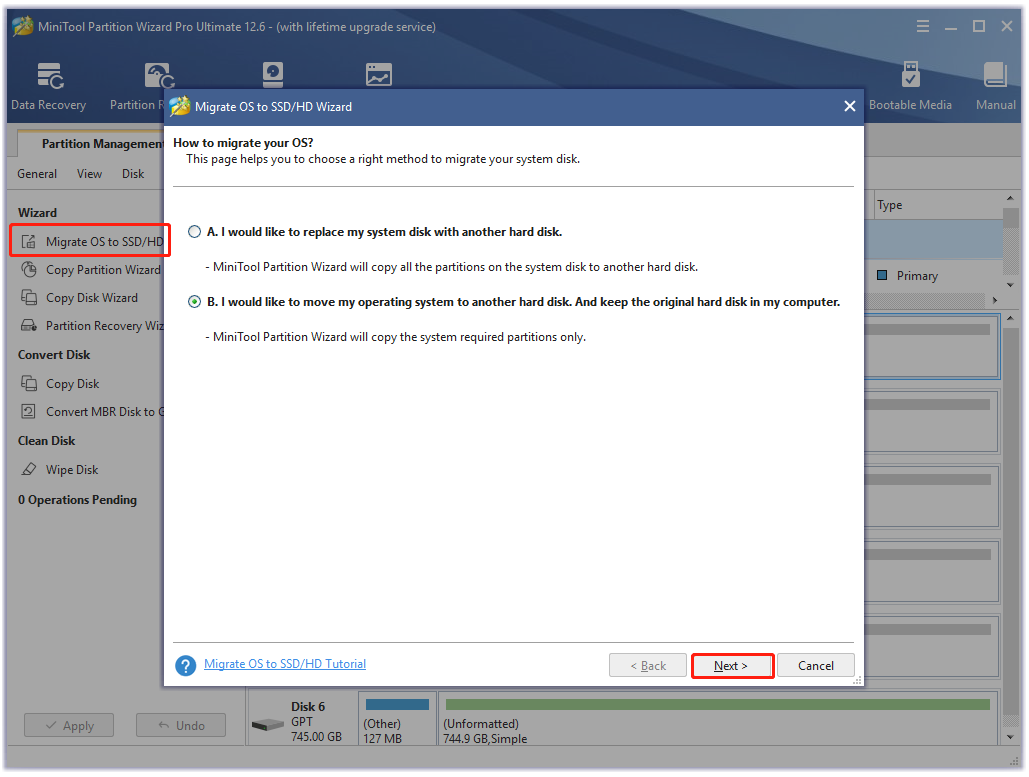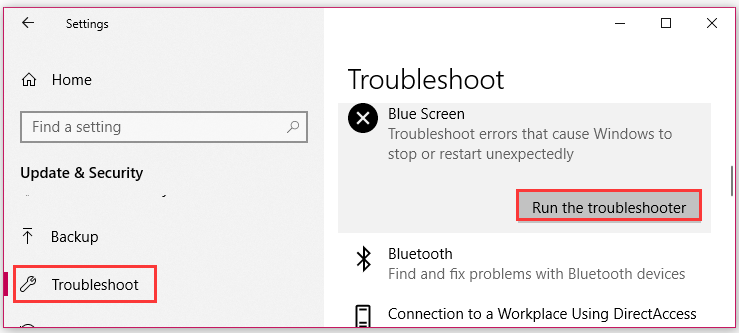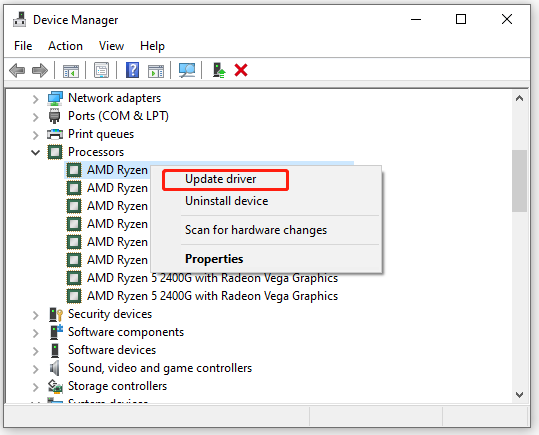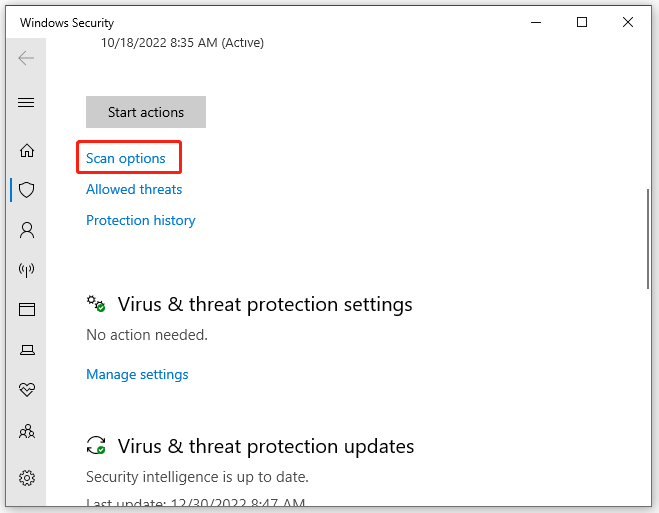- Конфликтующие аппаратные и программные несовместимости могут генерировать синий экран сообщений об ошибках смерти.
- Ошибка CACHE MANAGER является типом синего экрана ошибки смерти, и мы обсудим различные способы ее исправления в случае ее появления.
- У нас есть много подобных статей в нашем специальном центре, чтобы исправить синий экран ошибок смерти, поэтому обязательно сохраните его на случай, если вы столкнетесь с ними в будущем.
- Для более полезных руководств о том, как решать общие Windows 10 вопросов, проверьте нашу страницу исправлений.
Синий экран ошибок смерти может быть довольно неприятным, поскольку он заставляет ваш компьютер часто перезагружаться. Эти ошибки могут повлиять на любую операционную систему и Windows 10 не исключение.
Поскольку ошибки BSoD могут быть проблематичными, сегодня мы покажем вам, как исправить ошибку BSACH CACHE_MANAGER.
Содержание:
- обновление Windows 10 регулярно
- Обновите ваши драйверы
- Запустите средство устранения неполадок BSOD
- Запустите сканирование SFC
- Запустите DISM
- Удалить проблемный антивирус / программное обеспечение
- Запустить chkdsk
- Проверьте ваше оборудование
1. Обновление Windows 10 регулярно
Microsoft всегда работает над Windows 10 и запустить новые функции через Windows Обновить. В дополнение к новым функциям выпущено множество исправлений и ошибок безопасности, и многие из этих обновлений исправляют различные проблемы совместимости.
Поскольку CACHE_MANAGER BSoD может быть вызван устаревшим или несовместимым оборудованием, всегда полезно сохранить Windows 10 дней с последними обновлениями.
При загрузке Windows Регулярное обновление уменьшит вероятность возникновения проблем несовместимости и ошибок BSoD, поэтому мы настоятельно рекомендуем вам обновить Windows 10 так часто, как вы можете.
2. Обновите ваши драйверы
Многие ошибки BSoD вызваны устаревшими драйверами, которые не полностью совместимы с Windows 10)
Многие пользователи сообщали, что после обновления драйверов Realtek ошибка CACHE MANAGER была устранена, поэтому, если вы используете вышеупомянутые драйверы, обязательно обновите их до последней версии.
Стоит отметить, что эта ошибка может появиться практически в любом устаревшем драйвере, поэтому рекомендуется обновить как можно больше драйверов.
Обновление драйверов относительно просто, а чтобы обновить драйвер, просто посетите веб-сайт производителя оборудования и загрузите последние версии драйверов для вашего устройства.
В некоторых случаях достаточно установить драйверы, которые вы получили на компакт-диске, вместе с вашим оборудованием.
2.1 Обновлять драйверы автоматически
- Скачать и установить Обновление драйвера TweakBit
- После установки программа начнет сканирование вашего компьютера на наличие устаревших драйверов автоматически.
- Driver Updater проверит версии ваших драйверов, установленных в своей облачной базе данных, на наличие последних версий и порекомендует соответствующие обновления.
- Все, что вам нужно сделать, это дождаться завершения сканирования.
- В конце сканирования вы получите отчет обо всех проблемных драйверах, найденных на вашем ПК.
- Просмотрите список и посмотрите, хотите ли вы обновить каждый контроллер по отдельности или все сразу.
- Чтобы обновить один контроллер за раз, нажмите ссылку «Обновить контроллер» рядом с именем контроллера.
- Или просто нажмите кнопку «Обновить все» внизу, чтобы автоматически установить все рекомендуемые обновления.
Note: Некоторые драйверы должны быть установлены в несколько этапов, поэтому вам придется нажимать кнопку «Обновить» несколько раз, пока не будут установлены все их компоненты.
Поиск драйверов самостоятельно может занять много времени. Поэтому мы рекомендуем использовать инструмент, который делает это автоматически.
Использование автоматического обновления драйверов избавит вас от необходимости вручную искать драйверы и всегда будет поддерживать вашу систему обновленной версией драйверов.
Tweakbit Driver Updater (одобрен Microsoft и Norton Antivirus) поможет вам автоматически обновить драйверы и предотвратить повреждение вашего ПК, вызванное установкой неправильных версий драйверов. После нескольких испытаний наша команда пришла к выводу, что это лучшее автоматизированное решение.
3. Запустите средство устранения неполадок BSOD
- Откройте Приложение конфигурации И перейти к Обновление и безопасность раздел.
- выбрать устранение неисправностей из меню слева.
- выбрать BSOD из правой панели и нажмите Запустите средство устранения неполадок,
- Следуйте инструкциям на экране для устранения неполадок.
Если обновление драйверов не привело к ошибке CACHE_MANAGER BSoD, мы попробуем инструмент для устранения неполадок. Windows 10 имеет удобный встроенный инструмент устранения неполадок, который может помочь вам с различными проблемами, включая ошибки BSOD. Так что мы можем попробовать и посмотреть, повезет ли нам.
4. Запустите сканирование SFC
- Щелкните правой кнопкой мыши кнопку «Пуск» и откройте командную строку (администратор).
- Введите следующую строку и нажмите Enter: SFC / SCANNOW
- Дождитесь окончания процесса (это может занять некоторое время).
- Если решение найдено, оно будет применено автоматически.
- Теперь закройте командную строку и перезагрузите компьютер.
SFC-сканирование – это еще один инструмент для устранения неполадок, который мы собираемся попробовать. Это средство сканирования командной строки, которое сканирует ваш компьютер на наличие возможных проблем и решает их на ходу. Многие пользователи сообщают, что сканирование SFC может быть полезно при работе с проблемами BSOD в Windows 10)
5. Запустите DISM
5.1 Стандартная форма
- Щелкните правой кнопкой мыши Пуск и откройте командную строку (администратор).
- Вставьте следующую команду и нажмите Enter:
-
- DISM / Online / Очистка изображения / RestoreHealth
- DISM / Online / Очистка изображения / RestoreHealth
-
- Подождите, пока сканирование не завершится.
- Перезагрузите компьютер и попробуйте обновить снова.
5.2 С Windows установочный носитель
- Вставьте свой Windows установочный носитель
- Щелкните правой кнопкой мыши меню «Пуск» и выберите в меню командную строку (администратор).
- В командной строке введите следующие команды и нажмите Enter после каждого:
- dism / online / cleanup-image / scanhealth
- dism / online / cleanup-image / restorehealth
- Теперь введите следующую команду и нажмите Enter:
- DISM / Online / Cleanup-Image / RestoreHealth /source:WIM:X:SourcesInstall.wim:1 / Ограниченный доступ
- Обязательно поменяйте X значение с буквой диска, установленной с Windows 10 установка.
- После завершения процедуры перезагрузите компьютер.
И последний инструмент для устранения неполадок, который мы собираемся протестировать, это DISM. Это, пожалуй, самый мощный инструмент устранения неполадок, поскольку он снова отображает образ системы.
6. Удалите проблемный антивирус / программное обеспечение
Ошибки BSoD, такие как CACHE_MANAGER, могут быть вызваны как программным, так и аппаратным обеспечением, и для исправления этих ошибок рекомендуется найти проблемное программное обеспечение и удалить его.
Если эта ошибка появилась недавно, вы можете удалить любое недавно установленное программное обеспечение, чтобы исправить ее.
Ваш антивирус и брандмауэр могут быть наиболее распространенной причиной ошибки BSoD, поэтому для устранения этой проблемы рекомендуется временно удалить антивирусное программное обеспечение.
Практически любая антивирусная программа может вызывать ошибки такого типа, поэтому обязательно удалите любое антивирусное программное обеспечение, которое вы установили в дополнение Windows Defensor.
Немногие пользователи сообщили, что даже после удаления некоторых антивирусных программ ошибка CACHE_MANAGER не была исправлена. Вероятно, это связано с оставшимися антивирусными файлами и записями реестра, а для полного удаления антивирусного программного обеспечения следует использовать специальные средства удаления.
Большинство антивирусных компаний размещают инструменты удаления на своих веб-сайтах, и вы можете скачать и использовать их бесплатно.
7. Запустите chkdsk
- пресс Windows Key + X открыть расширенное пользовательское меню.
- выбрать Командная строка (администратор),
- После запуска командной строки введите chkdsk / f / r C: и нажмите Enter, чтобы запустить его.
- Мы должны отметить, что вам придется выполнять это сканирование для каждого раздела на жестком диске, поэтому обязательно замените C соответствующей буквой на вашем жестком диске.
- Мы должны отметить, что вам придется выполнять это сканирование для каждого раздела на жестком диске, поэтому обязательно замените C соответствующей буквой на вашем жестком диске.
CACHE_MANAGER Ошибка BSoD может быть вызвана вашим жестким диском, поэтому рекомендуется выполнить сканирование chkdsk.
Количество пользователей сообщило, что они даже не могут получить доступ Windows 10 из-за ошибки CACHE_MANAGER, и в этом случае вы можете выполнить сканирование chkdsk, выполнив следующие действия:
- Перезагрузите компьютер, пока Windows 10 сапог Вам нужно будет повторить этот шаг несколько раз, прежде чем начнется автоматическое восстановление.
- выбирать Устранение неполадок> Дополнительные параметры> Командная строка,
- После запуска командной строки введите chkdsk / f / r C: и дождитесь завершения сканирования. Не забудьте проверить все остальные разделы, изменив букву C на соответствующую букву.
8. Проверьте ваше оборудование
Если вы недавно установили какое-либо новое оборудование, обязательно удалите или замените его. Вновь установленное оборудование может быть несовместимо с вашей материнской платой, что может быть причиной ошибки CACHE_MANAGER.
Если вы не устанавливали какое-либо новое оборудование в последнее время, мы рекомендуем вам проверить вашу оперативную память, так как она является наиболее частой причиной ошибок BSoD.
Чтобы проверить свою оперативную память, вам нужно использовать такие инструменты, как MemTest86 +. Просто поместите инструмент на USB-накопитель и загрузите с него компьютер. Позвольте MemTest86 + работать в течение нескольких часов.
Если у вас установлено более одного модуля ОЗУ, вы можете проверить их один за другим, пока не найдете неисправный.
Помимо неисправного ОЗУ, ваш жесткий диск может также вызвать ошибку BSoD CACHE_MANAGER, поэтому убедитесь, что жесткий диск подключен правильно.
В худшем случае вам может понадобиться заменить жесткий диск или попробовать, если ваш жесткий диск работает на другом компьютере. Если и ОЗУ, и жесткие диски работают правильно, обязательно проверьте, правильно ли работает другое оборудование.
Часто задаваемые вопросы: узнайте больше о сообщениях об ошибках Blue Screen of Death
- Что вызывает синий экран ошибок смерти?
Нет четкой причины, по которой возникает синий экран ошибок смерти. Они могут быть вызваны фатальными системными ошибками или отказом оборудования. Единственная разница между ними – это ярлык, которым они обычно сопровождаются.
- Как узнать, почему я получаю синий экран ошибок смерти?
Синий экран ошибок смерти всегда оставляет файлы журнала, которые вы можете просмотреть позже. Имея немного знаний, вы даже можете точно определить, почему в вашем случае произошла конкретная ошибка.
- Как мне навсегда избавиться от ошибок Blue Screen of Death?
Исключая проблемы с оборудованием, единственный способ избавиться от ошибок Blue Screen of Death на 100% состоит в том, чтобы сделать полное Windows 10 перезагрузка.
Синий экран ошибок смерти, таких как ошибка BSD CACHE_MANAGER, может быть проблематичным, но вы можете легко исправить это, используя некоторые из наших решений.
От редактора Note: Этот пост был первоначально опубликован в октябре 2018 года и с тех пор был обновлен и обновлен в апреле 2020 года для обеспечения свежести, точности и полноты.
Post Views: 547
Not to «toot my own horn» but I have over 20 years experience in sales/repair of PC’s, my own business, mostly AMD units. I have the same amount of experience in electronic diagnosis of some of the most advanced circuitry anyone would deal with as an A tech in the automotive field. There’s fuel systems, brake systems, climate control systems, suspension systems, transmission systems, autonomous systems, etc. and all of them have a BUS. Some have connected Bus I/O’s some are on their own. Hence I completely understand the «flow» of data.
That said, the OS supplies this data to the very objects you mention. The error you described did not directly reference the CPU, like a code 18,19,41 might. The data that is transient ( the page your on, keystrokes, voice activation, the «stream») is temporarily(microseconds) stored in the RAM after is passes through the CPU cache, and various «BUS’s» to what you see on the screen or to your HDD/SSD to be put in the proper place as the OS dictates. The «chipset» is the PCH, MCH, or SPI, the main «hub» or «switch» where all of the hard parts communicate through. Nothing you’ve said has pointed to a problem with that motherboard component usually located on the south or northbridge, but not on the CPU.
In fact if that were bad, you would have a very serious problem, like no boot, no keyboard, no mouse, no USB, no internet, smell of something burning, etc. If that were hacked by the «NSA» or the «Italian Group», you would most likely never know or it would boot an OS under your OS, send out malicious packets, communicate with a C&C. All that you would need to do a packet inspection using a service like «Wire Shark». A problem that huge is very, very rare, nearly all of which is attacks against governments, schools, famous people, «hard targets». One needs «hands on» access to program the chip via some kind of serial programming device. In any case, if that was/is your issue, there’s nothing anyone can do but replace said system in whole, including all peripherals.
Your «input» like the keyboard travels into the motherboard to the CPU, RAM, GPU, you get my idea, it’s «input», over these «bridges», the «PCH» and either get displayed on the screen or stored on the HDD/SSD in the %temp% folder, some other file. The «output» is what displays on the screen, in a text file, a sound, or an action. To show how little is stored, slam the power off and what happens? You get an error that the system was improperly shutdown but whatever was on the screen prior or open is closed and gone that wasn’t saved to disk before the power loss.
Things like you mentioned before the «DNS» is what either your ISP gives you or service you use like «Quad9», «CloudFlare», «GoogleDNS» to access the world wide web. Unless your a business or pay extra, your inbound DNS come from the ISP and the outbound DNS is the ISP’s default or one of those type of services I mentioned. Your actual IP comes from your ISP, your router converts that to an anonymous, public facing IP. Your MAC address is bound to your motherboard’s Ethernet/WiFi controller, whether onboard or card and is permanent. So like you had mentioned «DNS poisoning», would really be «spoofing» which routes web traffic to known fake sites that look genuine. The «ARP» can be poisoned, it’s rare and your router probably blocks it or your «hosts» file is updated enough to prevent that.
So what I’m failing to understand is how you having an AMD based computer is the «problem». You have given one code relating to a memory type failure that could be anything from the HDD/SSD, RAM, CPU, or OS. You must do some work to narrow that part down some. It starts by running seemingly useless tests that are tedious and there are no shortcuts per se.
As I’ve now covered all including the most far edged subjects, can you point to one of those things and definitively tell me what hardware is at fault? Remember all of this data that passes to/through the motherboard comes in (input) from 4 main sources, the keyboard, mouse , HDD/SSD or received over the internet/phone if it’s setup that way. Then it transfers through the «chipset(s)» to these other «output» locations mentioned earlier. If data packets are getting dropped by a component it should give an error. From that point is where troubleshooting can begin. One thing I learned from my early years with onboard diagnostics and codes in cars that traverses directly to PC’s is that the «code» or «error» does not necessarily mean that specific part is at fault. It’s an indicator but many other things can cause the exact error. Ok, so an hour plus typing this out, hopefully it helps.
«It worked before you broke it!»
You should upgrade or use an alternative browser.
-
#1
-
- Mar 14, 2002
-
- 120
-
- 0
-
- 18,680
-
#2
en Xristos
-
#3
4x16MB EDO’s only give me 32MB,my board only recognises EDO’s in slots 4,the FP are recognised in slots 0,1,and4,5,
but only give me 16MB. It just doesn’t make sense,anything else i can try? How do i fix the cache memory error?
-
- Mar 14, 2002
-
- 120
-
- 0
-
- 18,680
-
#4
Are you saying that you were using mixed memory and it worked before? Are these 72 or 30 pin SIMM’s? I have never heard of mixing memory and it working well. I cannot understand how bank 4 only recognizes EDO. You need to check your memory timing as well. Everything works much better when it is matched. What about banks 2 & 3? You will need to either use FPM or EDO because they are working against one another and BIOS cannot properly register it as far as I see. Memory can be a real bear sometimes.
en Xristos
-
#5
-
- Mar 14, 2002
-
- 120
-
- 0
-
- 18,680
-
#6

en Xristos
-
- Mar 14, 2002
-
- 120
-
- 0
-
- 18,680
-
#7
en Xristos
-
#8
2 banks of 2 x 32MB = 128MB. Could you please tell me how to set up my BIOS to recognise extra memory, or how to set it up so that it will recognise DIMM.
If at first you don’t succeed try, try,try again
-
- Mar 14, 2002
-
- 120
-
- 0
-
- 18,680
-
#9
en Xristos
-
- Mar 14, 2002
-
- 120
-
- 0
-
- 18,680
-
#10
en Xristos
Similar threads
- Advertising
- Cookies Policies
- Privacy
- Term & Conditions
Имя ошибки: CACHE_MANAGER
Несмотря на то, что он называется, синий экран смерти не означает, что ваш компьютер мертв. Еще нет.

Менеджер кэшей
Иногда это может произойти один раз, и вы никогда не увидите его снова – в других случаях он будет повторяться и может даже заблокировать вас из вашего компьютера.
Ошибка CACHE_MANAGER возникает, когда, как следует из названия, проблема возникает в диспетчере кешей вашей файловой системы. Файловые системы, в основном, как данные организованы на вашем жестком диске. Если вы используете более старую систему, она будет использовать FAT32, но если вы используете более новую версию Windows, у вас будет NTFS. Кэш – это сохраненные данные, которые, как думает ваш компьютер, снова будут использоваться, поэтому в следующий раз, когда он используется, он загружается быстрее.
Однако эта проблема также может быть связана с вашей оперативной памятью или памятью.
На самом деле есть два типа памяти – изменчивые и энергонезависимые. Энергозависимая память – это оперативная память, которая используется, например, для одновременного открытия нескольких вкладок. Энергонезависимая память находится на вашем жестком диске – кеш – и используется для вещей, которые могут или не могут быть повторно использованы позже.
Прежде всего, две вещи, которые вы всегда должны иметь, когда сталкиваетесь с BSOD, например CACHE_MANAGER: переход в безопасный режим, а затем внесение обновлений.
Безопасный режим
Чтобы войти в безопасный режим, нажмите F7 (или другую экранную клавишу) при включении компьютера и выберите « Безопасный режим с использованием сети» из ваших параметров запуска. Оттуда:
- Нажмите « Пуск» ( Windows Key + X в Windows
- Нажмите Панель управления
- Нажмите Диспетчер устройств
Обновить драйверы
Щелкните правой кнопкой мыши все записи в приложении и выберите « Обновить драйверы» .
Разрешить Windows искать в Интернете соответствующие обновления драйверов – если он их находит, хорошо. Если нет, посмотрите на веб-сайт своего производителя и установите их там, если они уже не обновлены. Иногда Windows их подбирает, а иногда и нет.
После этого загрузите последнюю версию Центра обновления Windows и перезагрузите компьютер.
Вы также можете попробовать Driver Reviver для драйверов, которые Windows не может или не сможет найти.
Если у вас все еще есть проблемы, вам пришло время сделать следующие два шага – проверку диска и диагностику памяти. Это не сложно, но они очень трудоемки.
Проверьте компьютер на наличие ошибок
Первое, что вам нужно сделать, – запустить chkdsk.exe. Эта программа легко найти.
- Нажмите « Пуск» ( Windows Key + X в Windows
- Нажмите Run
- Введите chkdsk / f и нажмите Enter.
Сначала он перезагрузит ваш компьютер, а затем займет очень много времени. Если он обнаружит какие-либо ошибки, он быстро исправит их. Если обнаружены ошибки, вы не должны сталкиваться с какими-либо проблемами. Если ошибки обнаружены и исправлены, и у вас все еще есть проблемы или вообще не обнаружены ошибки, значит, вам придется запустить диагностику памяти.
Запуск теста памяти
Чтобы запустить диагностику памяти:
- Нажмите « Пуск» ( Windows Key + X в Windows
- Нажмите Поиск
- (Нажмите « Настройки» в Windows 8.)
- Введите « Диагностика памяти» и нажмите « Ввод».
Запустите результат, закройте все другие программы и разрешите перезагрузке и приступите к работе по настройке вашего компьютера. Если у вас неисправная память, удалите ее или замените.
Чтобы удалить память самостоятельно, откройте корпус компьютера и удалите его с материнской платы. Все, что вам нужно сделать, это повернуть назад рычаги, удерживающие палочки RAM на месте и удалить их. Если вы заметили какие-либо проблемы с RAM-плеерами – скажем, небольшую скалу, где она не должна быть – избавьтесь от нее и подключите ее обратно. На вашем ПК может быть руководство, в котором подробно описывается, как безопасно и легко заменять память ,
Однако более простой способ действий – просто купить новую ОЗУ и заменить ее.
Если после всех этих шагов вы по-прежнему получаете ошибку CACHE_MANAGER, обратитесь в корпорацию Майкрософт или от своего производителя и следуйте их инструкциям, чтобы убедиться, что ваш компьютер исправлен.
Стив Хортон
Many Windows users encounter the cache manager BSOD crashing error. What is cache manager? How to fix the error? If you are also trying to figure them out, this post of MiniTool is what you need.
BSOD, also known as Blue Screen of Death and Stop code, is one of the most common system crashing errors on Windows. This problem can cause a computer to restart frequently and even data loss. Moreover, the BSOD screen is often accompanied by different error codes such as Critical Process Died, Win32k power watchdog timeout, and the one discussed in this post.
Here’s a true example from the answersmicrosoft.com forum. He encountered the cache manager BSOD error on Windows 10. What is cache manager? How to fix the error? Let’s start exploring the answers.
Dear, since I installed Windows 10, I got the Blue Screen Crash CACHE_MANAGER problem, it turns into a blue screen, and then my PC restart! I think it`s caused by a driver issue but I can`t fix it!!! Can someone help me???
https://answers.microsoft.com/en-us/windows/forum/all/blue-screen-crash-cachemanager/e5591cdf-eb6f-47e8-8483-976d2cacaf47
What Is Cache Manager
What is cache manager? It is a set of kernel-mode data structures and system threads that work with the memory manager. It’s mainly used to interact with other elements of the operating system and provide data caching for all Windows file system drivers.
However, many users reported that their computer restarts suddenly and throws the cache manager BSOD error. Don’t worry. We will analyze the possible causes of the error and provides corresponding fixes.
What Causes the Cache Manager BSOD Error
As the error message suggests, the stop code cache manager BSOD can be caused by issues with your hardware components like hard disk and memory. In addition, outdated device drivers, corrupted system files, outdated OS, and even virus infection are also responsible for the BSOD error.
Important Thing! Back Up Your Computer As Soon As Possible
According to user reports, the cache manager blue screen error often occurs with frequent shutdowns, causing data loss. So, we highly recommend that you back up all important data as soon as possible before you fix the error.
How to back up your computer safely and quickly? MiniTool Partition Wizard is a good choice that can migrate OS and even copy the whole hard disk without reinstalling. Here you can use the tool to make a backup first and fix the error via the following solutions.
MiniTool Partition Wizard DemoClick to Download100%Clean & Safe
How to Fix the Cache Manager BSOD Error on Windows
There are 9 feasible ways to fix the blue screen crash cache manager on Windows 10/11 PCs. We recommend you try them in order until the problem gets solved.
# 1. Run the Blue Screen Troubleshooter
The Blue Screen troubleshooter is a Windows built-in diagnostic tool that can be used to scan and repair BSOD errors. Here you can use the troubleshooter to fix the blue screen crash cache manager error.
Step 1. Press the Win + I keys to open the Settings app and select Update & Security.
Step 2. Click on Troubleshoot from the left pane, and then scroll down to find the Blue Screen and click on the Run the troubleshooter button.
Step 3. Wait for the troubleshooter to detect the BSOD error. If any issues related to the BSOD error are detected, click on Apply this fix and follow the on-screen prompts to complete the repair.
# 2. Install the Latest Windows Updates for Your Computer
If you have never updated your operating system, your computer may interfere with some bugs or viruses, which can trigger the stop code cache manager. So, it’s highly recommended that you keep the Windows system up to date.
Step 1. Open the Settings app again and select Update & Security.
Step 2. With the Windows Update option selected from the left panel, click on the Check for updates button from the right panel if available. If the option is not here, you can Download and install it under the latest updates.
After you installed the latest Windows updates, reboot your computer and check if the blue screen cache_manager error disappears.
# 3. Update Your Device Drivers
Some users from the answers.microsoft.com forum reported that the BSOD cache manager error can be fixed by updating the chipset driver. Here you may have a try.
Step 1. Right-click the Start menu and select Device Manager from the context menu.
Step 2. In the pop-up window, expand the Processors category, right-click the chipset driver that you want to update, and select Update driver.
Step 3. Select the Search automatically for drivers option and follow the on-screen instructions to complete the update. Then you can refer to the same process to update other device drivers like GPU driver, storage driver, etc.
# 4. Scan Your Computer for Virus
In addition, the BSOD cache manager crashing error can be caused by a virus or malware infection. So, you’d better perform a full virus scan of your computer using Windows Security or third-party antivirus software.
Step 1. Type virus in the search box and click the Virus & threat protection app from the top result.
Step 2. Inside the Windows Defender Security Centre, click the Scan options option on the right panel.
Step 3. Select Full scan and tap on Scan now to start the full virus scan. Then you need to wait a while until the scan completes.
Wait for the scan to complete and reboot your computer to see if the blue screen cache_manager error disappears.
# 5. Check Your Hard Disk for Errors
The Windows 10 cache_manager BSOD error usually indicates there is an issue with your hardware components like hard disk. To rule out this factor, you’d better check your hard drive for errors.
How to check hard drive errors on Windows 10/11? The CHKDSK command is often used to check hard drive errors, but sometimes this tool may run into various issues like CHKDSK write-protected and CHKDSK not working. In this case, MiniTool Partition Wizard is a better choice. It can help you check bad sectors on the hard drive easily.
MiniTool Partition Wizard FreeClick to Download100%Clean & Safe
Step 1. Launch the MiniTool software to get its main interface, and then select the problematic hard disk and click on Surface Test from the left pane.
Step 2. Click on the Start Now button in the pop-up window. After that, this tool will scan the whole disk immediately and show you the test result.
Tips:
You can also select Check File System from the left action panel and elect Check & fix detected errors and click on the Start button to repair the file system errors on the hard disk.
Step 3. If any blocks are marked with red color, it indicates that your hard drive is getting failing. In this case, you can use this bad sector repair guide or consider replacing the hard disk with a new one.
Once repaired, you can restart your computer and check if the BSOD cache manager error is gone.
# 6. Check the System File Corruption
If some system files get corrupted or broken, you may encounter the Windows 10 cache_manager BSOD error. In this case, you can scan and repair the system files using the System File Checker or DISM tool.
Step 1. Type cmd in the Search box, and then right-click the Command Prompt app and select Run as administrator. Then click on Yes to confirm this operation.
Step 2. Type the sfc /scannow command in the elevated command prompt and hit Enter. This process may take some time to complete. Don’t interrupt this process until it is complete.
Step 3. If the SFC tool fails to work, you can try using the DISM tool. Type the following commands in the elevated Command Prompt window in order and hit Enter after each one.
- DISM.exe /Online /Cleanup-image /Scanhealth
- DISM.exe /Online /Cleanup-image /Restorehealth
- DISM.exe /online /cleanup-image /startcomponentcleanup
# 7. Disable BIOS Memory
Some users from the Microsoft forum reported that the cache manager blue screen is gone after disabling the BIOS memory option. It may seem strange but worth trying. To do this work, you just need to enter BIOS, navigate to the Advanced tab, and set the Cache Memory option to Disabled. Also, you can refer to this guide to know more details.
# 8. Check Your System Memory
Some users reported that the stop code cache manager BSOD error can be caused by broken system memory or insufficient memory. To rule out this factor, we recommend you perform a memory test or add more memory to the computer.
Step 1. Type Windows Memory Diagnostic in the search box and double-click this program under Best match.
Step 2. You will receive a message saying Check your computer for memory problems. Here are 2 options for you to perform a RAM test. It is recommended that you click Restart now and check for problems.
Step 3. Then wait for this diagnostic process to finish. If the RAM gets broken, you may consider replacing it with a new one. You can refer to this post “How to Get More RAM on Laptop—Free up RAM or Upgrade RAM” to know more details.
# 9. Wipe Your Hard Drive and Reinstall Windows
If none of the above methods get rids of the cache manager blue screen error, you may consider wiping the hard drive and reinstalling Windows. This process will delete all data on your hard drive and revert your system to its original status, so make sure you have backed up all important data in advance. This method has been proven by many people to be useful. You may have a try.
Are you troubled by the cache manager BSOD crashing error? Now, you come to the right place. Here are several effective troubleshooting methods.Click to Tweet
Bottom Line
This post focuses on how to fix the cache manager BSOD error on Windows. You can try the given 9 methods to fix the error. If you have better solutions, please share them with us in the following comment zone. In addition, you can contact us via [email protected] if you have any questions about MiniTool Partition Wizard.

